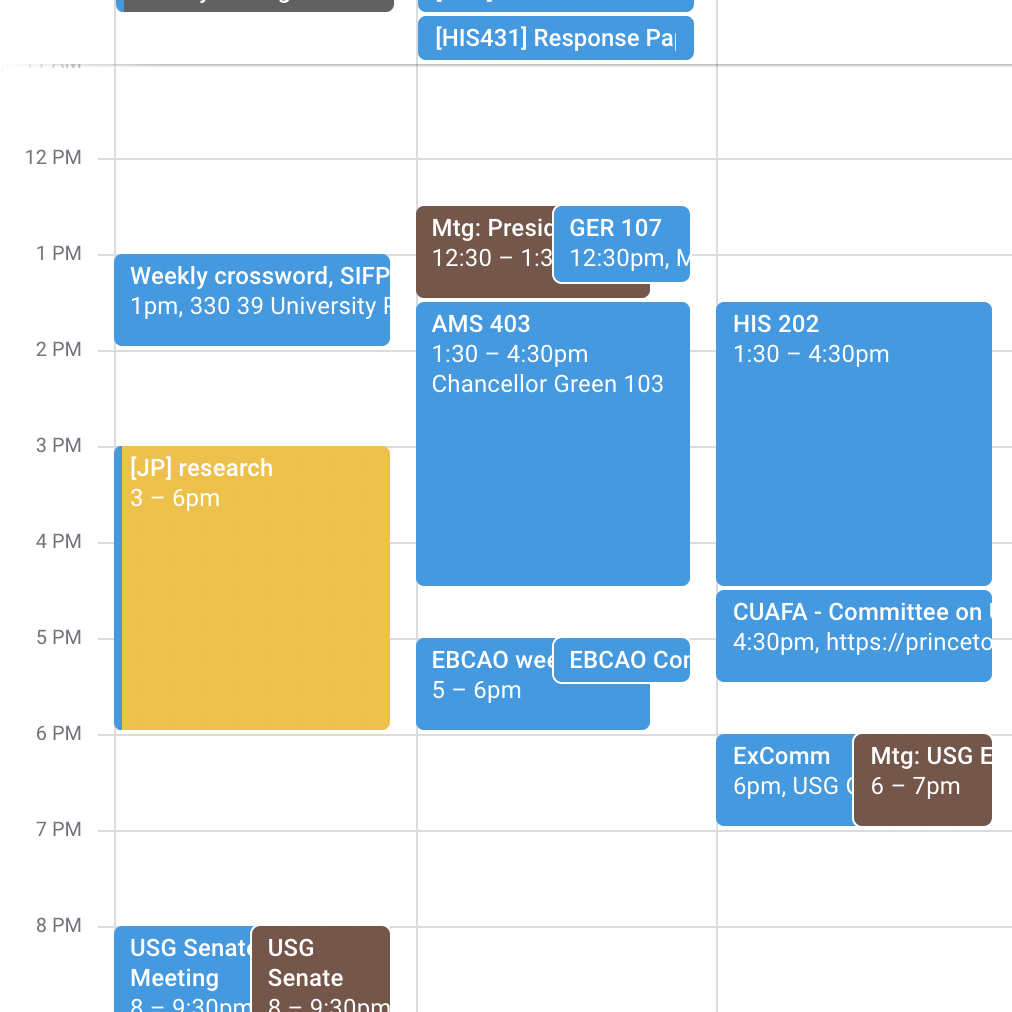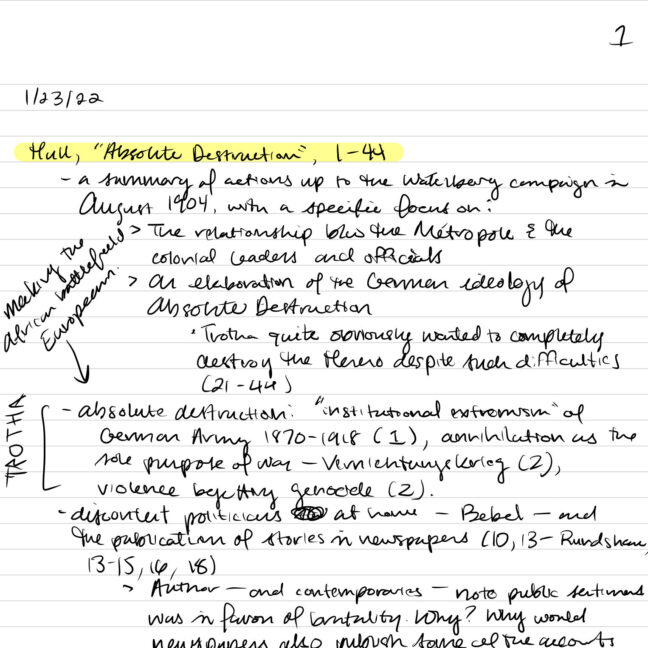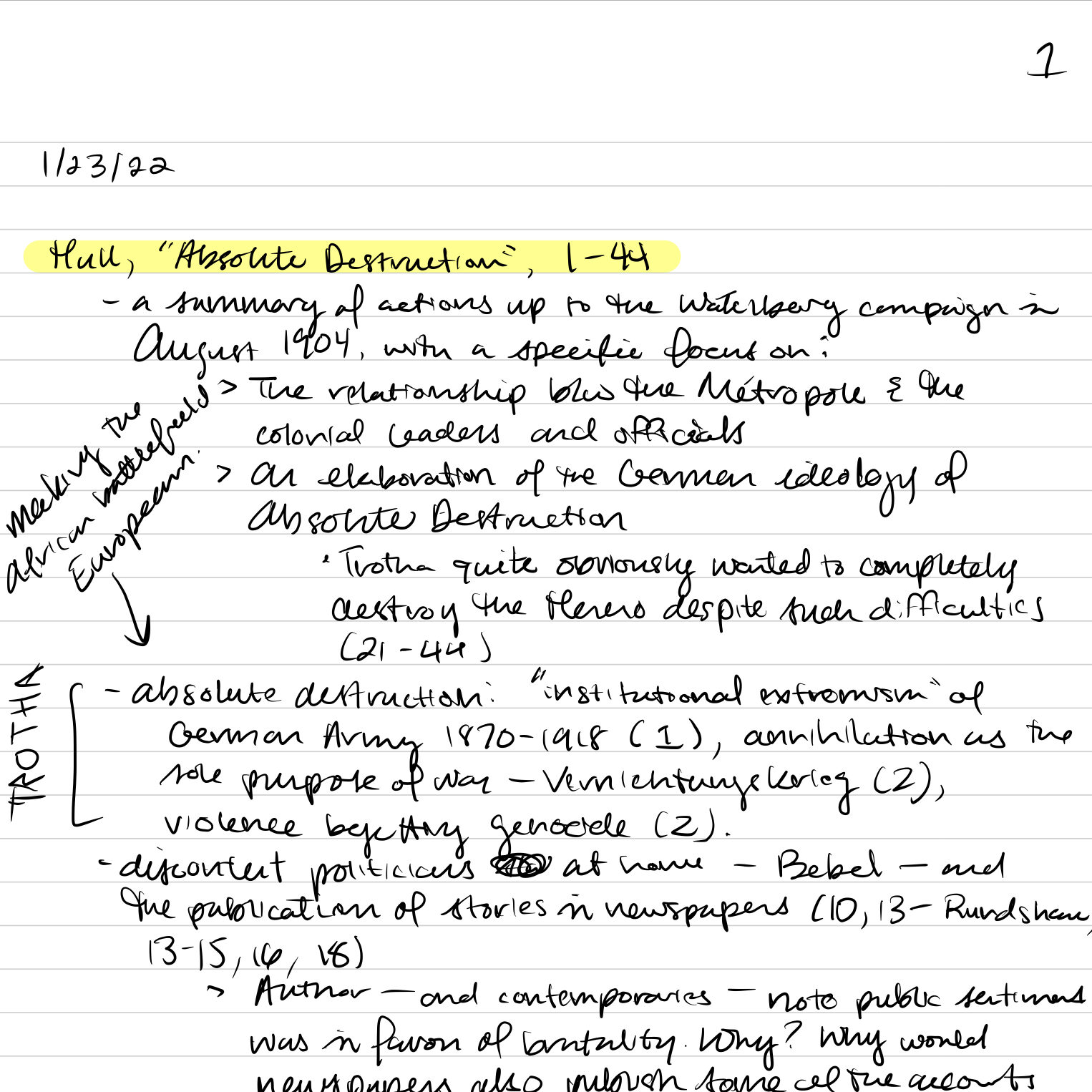As I dive into my second junior paper, I’ve begun to realize how much more serious this paper is than the first one. Gone are the safety rails once provided by Princeton’s History department; instead of a course with concrete deadlines, I am now in the metaphorical Wild West, negotiating with my advisor on a whole bunch of elements: deadlines, research content, framing, among others. Even though it is only February when I write this, the April deadline eyes me ominously. With four classes and an array of extracurricular activities, whatever will I do to survive my second JP? How can I even anticipate the thesis?
At PCUR, we’ve done plenty of reflections on our prior research experiences. The more I think about it, the best thing to do is to reflect on my first JP. In that paper, I explored the attitudes and ideologies of consumption that post-war consumers held, particularly in relation to an acute shortage of nylon stockings. Sifting through dozens of articles in local newspapers, I identified many letters to the editor that female consumers sent in to voice their opinion about how nylons should be distributed, who deserves them, and how the shortage was affecting their everyday lives.
Although I am undoubtedly proud of the final product, there were many things I could improve about it. From the way I kept sources and my reading schedule to my writing method and the final editing process, I could enumerate an endless list. For now, I will highlight two of the biggest takeaways from my first JP, which will be particularly useful given the abbreviated timeline of the second paper.
Keeping a Research Journal
When I would write my first JP, thoughts would come and go. While I was eating with friends, taking a walk, or even showering, epiphanies about how to use sources, construct an argument, and piece together a convincing narrative would pop into my head. But given the situations that I was in—as well as my lack of a dedicated place to record these ideas—I often lost them before I could ever meditate on their significance to my research.
Since I have started my second JP, I have made sure to keep track of my thoughts, my readings, and my sources by taking notes in a research journal. Usually, after I complete a set of readings, for instance, I write down the central arguments and any of my questions. I also record important quotes, page numbers, or interesting sources, particularly if I believe they are directly relevant to my own research. But above all, the most important element is that I will be able to trace the development of my ideas. If I ever find that an idea does not work into the essay, I can always return to an earlier jumping-off point to propel my research with all the requisite information in one, easy-to-access location.
Setting Aside Research Time
Of course, I must make sure I habituate this practice into my daily life. The first few weeks of the semester have been challenging, particularly because my classes and extracurricular life have made more urgent demands of me so far. But if I want to even hope to have a finished product ahead of the April deadline, it is important that I keep to some regimented schedule, buttressed by achievable expectations and deliverables. This was a particularly burdensome part of my first JP, which is structured to be due over Winter Break instead of Reading Period. I offloaded a lot of my writing, then, to the break, when I should have been relaxing.

Thus, at the beginning of the semester, I input all the History department’s deadlines for JP work into my personal Google calendar. March 15, for instance, is the date a partial draft of the JP is due, while the final deadline is April 26 for a completed paper. Additionally, so that I would not forget, I also embedded more notifications for those dates. My calendar will remind me of the final copy of my JP up to two weeks in advance, which should sufficiently shock me into getting something done.
Above all, I set aside three hours every Sunday on my calendar to devote to research specifically. I don’t limit myself to these three hours, but I signal how important it is to intentionally take some time each week to force myself to work on it. This stands out on my calendar, particularly because I marked it with a ‘yellow’ color instead of the default blue. Standing out among a crowded field, it reminds me that this is the time that I must take if I want to make any progress on my JP.
There are countless other resources that many of my peers have written about that can also assist with the JP process. Zotero is an excellent tool that helps me streamline my research regularly, which Bridget has written about. Moreover, if you are interested in how to keep all your files organized in general, I wrote an article that might be of use regarding that. But you shouldn’t limit yourself to the two things to work for me. As I outlined above, there are plenty of other great resources, but it also requires your careful reflection and experimentation to figure out how you would keep a research journal, how you organize your files, or how you write. Research isn’t a one-size-fits-all type of shoe.
So far, I have kept to my two takeaways quite well. As the photos might show, I have been taking copious and helpful notes to guide my research. I have composed a schedule that intentionally sets aside time each week to make any progress on my research, even if I manage to find other time during the week to focus on my JP. But as the semester gets harder — and my other classes demand more and more of me — I am glad that I have taken this time to reflect on the strategies that can make my workflow even better from my first JP experience as I aspire to create a great piece of research.
– Austin Davis, Humanities Correspondent



